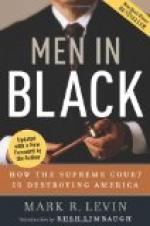The client might be surprised if he knew what the lawyer was thinking of him. If asked, the lawyer would moisten his lips, draw a long breath, and then pause, not for lack of thoughts however. The best client in court for the lawyer is the silent client. One of the greatest calamities from the lawyer’s point of view is when the client is on the witness stand and begins to get confidential with the judge and to tell him exactly how he feels about the whole matter.
“Why,” said a lawyer, “I had a perfect case and then the judge asked a question and spoiled the whole thing. I think it was outrageous, the judge had no right to interfere.”
The attorney’s feeling toward his client is contained in the wish that he wasn’t there. The legal aspect of the case, the real point at issue, is probably something very different to what the client has in mind. The lawyer has an uneasy feeling that, in the client’s eyes, he will not do the case justice.
“How outrageous,” thinks the defendant, “that I should be sued when I’ve been over-generous for years. And the jury ought to know exactly what these people are who said they’d call off the suit if I’d pay them a hundred dollars.” The lawyer is aware of these views, because he has been told them more than once; he also knows that he cannot try the case in that way.
The counteraction of emotions and feelings between the lawyer and the client, the judge and the jury, the undercurrents that are constantly moving from one to another, make up the drama of the court. The characters are laid, the theme is selected, the actors are chosen, and it remains for the play to be prepared.
VII
PROGRAMS AND PLEADINGS
Pleadings are the programs of the performance. They are printed beforehand and everybody gets a copy. Preparation consists in the rehearsal and the carpentry of setting the scene. Any lawyer knows how important the pleadings are, but nobody else does. The judge does not pay any more attention to them than he has to. Juries hardly ever see them; if they did, they could not understand them. The witnesses never hear of them, the clients have sworn they have read them and have sworn that they are true. Yet not one client in a thousand could give an explanation of them other than, “My lawyer told me to sign it, so I did.”
Whenever anyone gets anxious to understand a pleading, there are so many volumes about the subject and so many bookcases of decisions they would furnish a house. All this may appear flippant, but the subject is so absurd, abstruse, and abnormal to a man of business, that it is almost impossible to make it understandable. A partial list of authorities on the subject sounds like a chapter from Alice in Wonderland: Pepper on Pleading; Perry on Pleading; Pollock on Pleading; Pound on Pleading; Puterbaugh on Pleading; Phillips on Pleading; Pomeroy on Pleading. The number of court decisions in which this branch of the proceeding has been reverently and gravely dealt with reads like a metaphysical discussion in the dark ages. The names formerly used were superb. Complaint, demurrer, confession and avoidance, traverse, replication, dilatory pleas, peremptory pleas, rejoinder, rebutter, and sur-rebutter.




